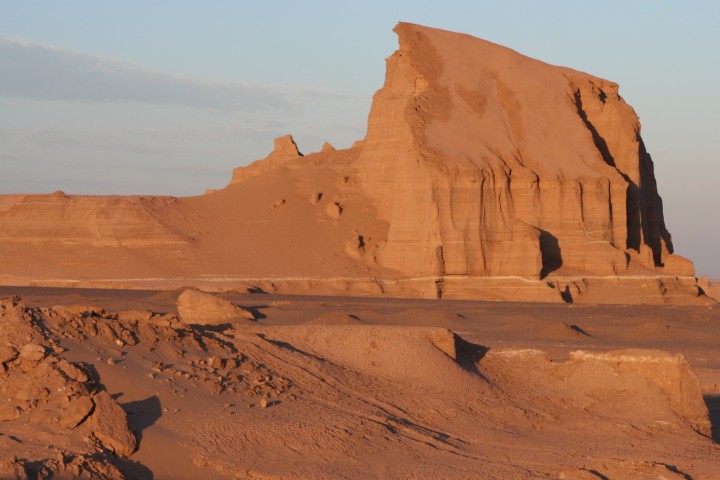The Hottest Surface Temperature on Earth Is Not Actually in Death Valley

New research on Earth's most extreme surface temperatures has found it is much worse to set foot in Iran's Lut Desert (Dasht-e Lut) and North America's Sonoran Desert.
According to high-resolution satellite data from the last two decades, the land in these two regions can sometimes heat up to an astonishing 80.8°C (177.4°F).
The Lut Desert holds first place for the world's highest land surface temperature. Between 2002 and 2019, this patch of sand regularly reached blistering extremes - likely because it's nestled between a range of mountains, which trap hot air above the dunes, especially the parts covered in black volcanic rock.
The findings support a previous study, published in 2011, which found the Lut Desert was one of the most scalding places on Earth.
In 2004 to 2007 and 2009, this slice of sand experienced the highest surface temperatures on Earth. In 2005, initial data found the region reached 70.7 °C (159.3°F), although the authors of this new paper say that's likely an underestimate.
Since that first analysis, NASA has released a new version of its satellite software, allowing for better detection of land surface temperatures on Earth. Using this new update, researchers say temperatures in the Lut Desert are actually 10 degrees higher than we once thought.
The Sonoran Desert, which traces the border of the United States and Mexico, can reach similarly hot extremes, although not as frequently as the Lut Desert. It is mainly located in a rain shadow, and the low elevation of this desert means air has little chance to rise and cool.
Because the Sonoran is also surrounded by mountains, heat is easily trapped in the arid basin, increasing first the atmospheric temperature and then the land temperature, like a boiling sidewalk on a hot day.
It's unclear how much climate change has contributed to these extreme temperatures, but the hottest days recorded by satellites have occurred in more recent years, especially during La Niña, a climate oscillation that can fluctuate with global warming.
"While the behavior of the atmosphere in response to more anthropogenic emissions is well studied, the response of the land surface under different emission pathways is not well understood," the authors write.
"It is hoped the future research in this direction can shed light on not only how extremes have changed in the past but how they will likely affect our planet in the future."
As well as finding the hottest land on Earth, the new analysis was also able to identify the coldest place. Antarctica easily won that record with a low of -110.9 °C (-199.6 °F), which is 20 degrees lower than previous estimates.
Incoming sunlight in this area of the world is relatively weak, and a lot of the rays are reflected back into the atmosphere by snow and ice. Strong winds and a low pressure system also coincide to reduce the temperature of Antarctica's surface even more.
Further research on remote land masses outside the reach of weather stations are needed to determine how ground temperatures are changing with modern times.
The study was published in the Bulletin of the American Meteorological Society.

_0.jpg)